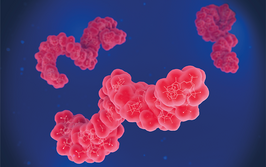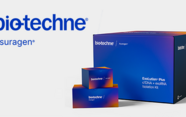Barcode Tracking Simplified
What you need to think about before choosing the best system for your lab
In the last five years or so, anatomic pathology (AP) laboratories have finally received the tools and software they need to implement barcode tracking of specimens and materials from accessioning through to grossing, histology/cytology, immunohistochemistry (IHC), specials stains and reporting.
Developing the technology needed by pathology labs has not been without its challenges though. For example, 2D codes need to withstand all the rough handling and solvents used in processing tissue and still be printed directly onto the plastic tissue cassette and read by a scanner. Slide labels also need to be applied as soon as the slide is produced and the slide label must withstand processing chemicals as well as high heat from the slide drying, antigen retrieval used for IHC and the wide variety of other chemicals used for special stains, from strong acids to strong bases. The labeling system vendors finally worked out how to meet our demanding requirements and now we can reliably pass these materials through the entire gamut of histology processing and staining and the labeling information is still intact at the end.
The puzzling piece of the barcoding evolution, however, was the late entry into the field by the laboratory information system (LIS) vendors. Ten years ago, I worked for a company that manufactured an IHC stainer that had cornered half of the market. We developed a barcoding system for the stainer and then approached several major LIS vendors about linking the stainer to the LIS using the barcode with an interface for stain orders. It was like talking to people who had never heard of a barcode. A VP of one of the companies we spoke with actually said, “Why would anyone want to do that?” We were astonished that these supposed computer-centric companies were so far behind the curve that they could not even comprehend what was coming.
Indeed, these companies were so lacking in vision, and so late to the game, that IHC instrument vendors grew tired of waiting for them to catch up and developed their own barcode specimen tracking systems that would link to their instruments. Some labs, independently of the vendors, went to the extreme of producing their own barcoding systems after their frustrating experiences with their LIS vendors. Now five years after the first commercial products from instrument vendors came on the market, the LIS vendors have finally caught up.
A pathology department can now implement a barcoding system using commercially available products, but it’s not an easy process. Anyone contemplating this should approach it with the understanding that whatever system your lab selects, there will be tradeoffs. So, it is important to study the compromises very closely, and demand what you need and not settle solely on what’s on offer. You probably won’t get everything you would like and you will need to decide between the necessary and the nice-to-have features.
One of the first things to do is to find out precisely what your current LIS vendor offers and if it will match your requirements. You will probably find that most can now supply barcoding and tracking from accessioning through to general histology slide labeling. Some can offer cytology; however, custom programming for some instruments may be needed. Outside consult case accessing is another matter altogether and may require extensive custom programming.
If your vendor does not offer any barcoding solution, or if the product is lacking in some way, there are third-party vendors that offer very good alternatives. However, they will (most likely) hold tracking system data in their own databases and not in the primary LIS. And, you may not be able to write data entered into the third-party system to the primary LIS database tables. If that is the case, it just becomes a tracking system and you will use the primary LIS for data entry (including, new blocks, stain orders, etc.).
Additionally, if you want to use a third-party tracking system, you need to understand how it interacts with the primary LIS. There will be a communication protocol, but how does it work, and will it need additional software? In the extreme case, I have seen a primary LIS that requires its own barcoding system installing as the middleware for any third-party system. Of course, that may defeat any purpose of the third-party system.
It is important to examine the software interface for the instruments you have in your lab. Most LIS’s can link an IHC or special stains instrument to the LIS, but can the stainer read your LIS barcode/2D code? Or, will you need to double-label the slides just for the stainer? What happens after that in terms of tracking? If you have a mix of instruments from different vendors, how does that affect the labeling workflow – do some slides flow easily using the LIS barcode and others need double labeling for specific instruments? And, should you even have a mix of instruments?
The vast amount of data produced by a barcoded system includes location and time stamps to turnaround time, to individual workload, and so on. But, does the system offer real-time tracking with dashboards that make it easy to access the information you want (i.e., blocks/stains currently in various stages of processing), or do you need to run occasional static reports to get the information? Can you produce custom dashboards and reports? Third-party vendors offer solutions to this as well by tapping directly into the LIS tables and allowing the user to build custom real-time reports/charts for production management.
So, although AP barcoding systems are available commercially, doing your homework will pinpoint the problem areas you need to be aware of before contacting vendors. Plan onsite visits to institutions that use your LIS and a barcoding system to see what they did and what problems they encountered and had to solve. Trust me, this is time well-spent and your pre-planning work will pay off when you come to implementing the system.
Tim Morken is pathology site manager, Parnassus Campus, Supervisor of Electron Microscopy/Neuromuscular Special Studies, Department of Pathology, UC San Francisco Medical Center, California, USA.




















